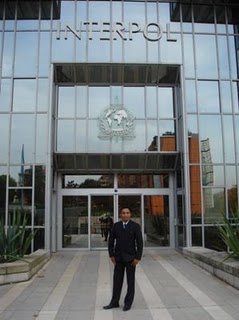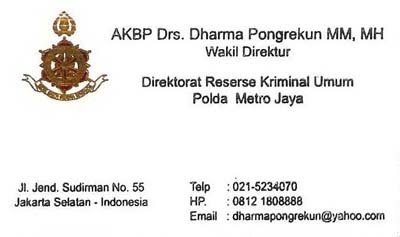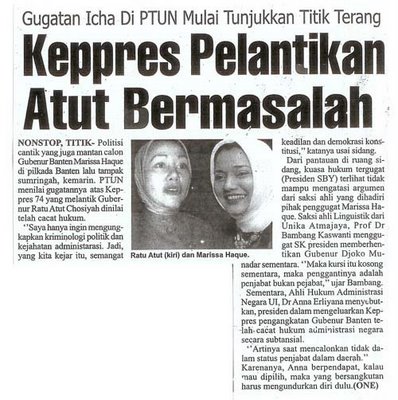CD Moral Etika Islam dari Zulkieflimansyah dan Marissa Haque dalam Pilkada Banten 2006 Lalu
Rasa Iri Mereka & Maafkanlah, Marissa Haque & Ikang Fawzi, Doktoral di IPB
Marissa Haque & Ikang Fawzi, Berjiwa Besar walau Terus Dihina, dalam Doktoral di IPB
Langganan:
Postingan (Atom)
Dari HR. Bukhari dalam Bunda Marissa
Dari Abu Hurairah RA, "Rasulullah bersabda,'Allah Ta'ala berfirman, 'tidaklah hamba-Ku yang mukmin apabila Aku mengambil kekasihnya di dunia ini, kemudian ia ridha dan mengharapkan pahala kepada-Ku kecuali balasannya adalah surga.'" (HR. Bukhari dalam Marissa Haque Fawzi)
AKBP Dharma Pongrekun, SH, MM, MH
Kartu Nama AKBP Dharma Pongrekun, SH, MM, MH
Ratu Atut Chosiyah, Marissa Haque Mempermasalahkan Keppres yang Ditelikung Ratu Atut CHosiyah Cs
Airin R D,Diduga Selalu Jadi Mafia Hukum dalam Upaya Tuntutan & Gugatan Pilkada Banten 2006`
Entri Populer
-
Jujur saya semakin terusik, terluka, serta terhina terus-menerus diganggu oleh ocehan duo Addie MS dan Kevin Aprilio putra sulungnya di medi...
-
Polisi Baik dan Lurus Diantara Marcella Zalianty dan Ratu Atut Chosiyah Filed Under: Politik by Audi — 13 CommentsJanuary 3, 2009 Bebe...
-
Marissa Haque Jumat, 28 Oktober 2011 Terharu Sandang Gelar MBA Sumber: http://www.suarakarya-online.com/news.html?id=28979 Artis ...
-
Ketika IPB kupilih menjadi wadah mengasah kognisi-afeksi-psikomotorik beberapa tahun silam, banyak yang tersenyum sinis padaku. Dan ba...
-
Sumber: http://news.okezone.com/ Minggu, 27 Juni 2010 - 15:56 wib TB Ardi Januar - Okezone JAKARTA – Departemen Hukum dan HAM akhirnya m...
-
Inilah 145 Calon Ketua KPK Minggu, 27 Juni 2010 - 14:23 wib TB Ardi Januar - Okezone JAKARTA - Departemen Hukum dan HAM akhirnya mengu...
-
Just do the Best and Allah will do the Rest Ketika kita di dzolimi oleh orang yang tidak dikenal, dan kita merasa fitnah yang dilonta...
-
Polisi Baik dan Lurus Diantara Marcella Zalianty dan Ratu Atut Chosiyah Tidak banyak polisi di dunia yang baik, termasuk juga di Indonesia...
-
Senin, 02 Januari 2012 Video Kenangan Marissa Haque Fawzi saat Lulus Ujian Doktor IPB http://youtu.be/_NHmY9QdGeI http://youtu.be/nGwiM9A...
-
Marissa Haque Fawzi: "Hukum, Biologi, dan Matematika dalam Hidupku di IPB"


















